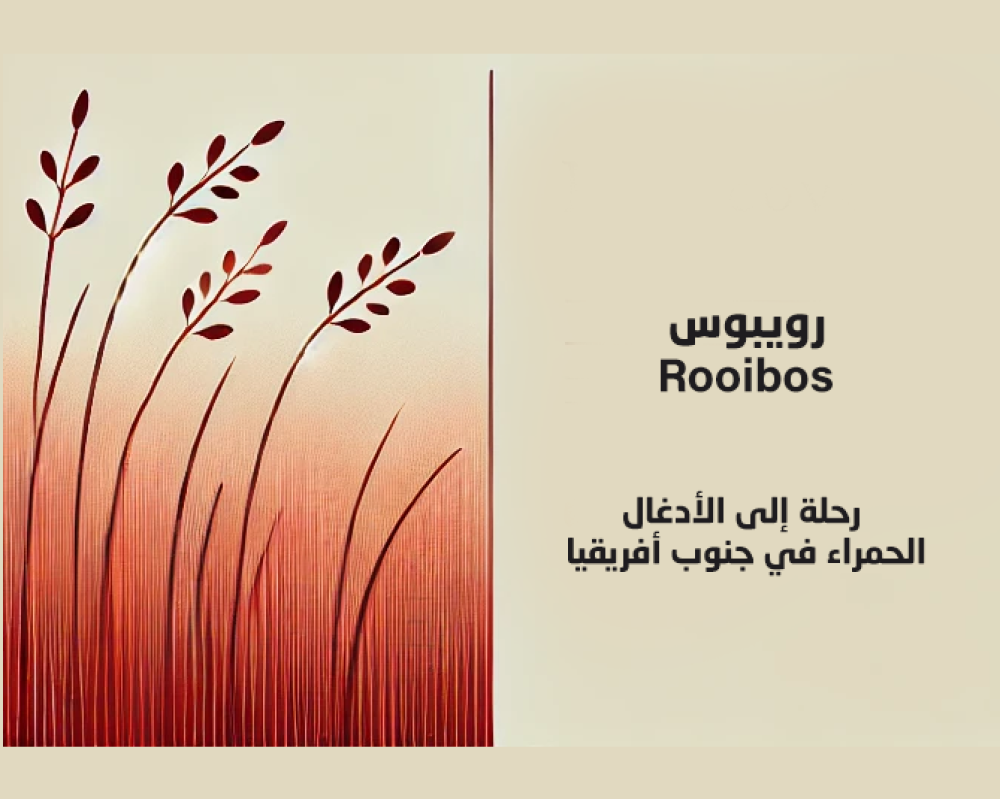When it comes to exploring the vast and diverse landscape of tea, one cannot overlook the unique charm and benefits of Rooibos. Originating from the sun-soaked lands of South Africa, this crimson elixir has garnered a global following. Unlike traditional green or black tea, Rooibos (pronounced "ROY-boss") offers a caffeine-free alternative that is rich in flavor and brimming with health benefits

The Origin and History of Rooibos Tea
The origin and history of Rooibos tea are deeply rooted in South Africa, particularly in the region of the Cederberg Mountains. Here's a detailed look at the fascinating story behind Rooibos tea:
1. Indigenous Use by the Khoisans:
Rooibos tea's history begins with the indigenous Khoisan people of the Cederberg region in South Africa. The Khoisans, who are one of the oldest indigenous groups in Southern Africa, have a long history of using Rooibos leaves for various purposes.
For centuries, the Khoisans harvested the leaves of the Aspalathus linearis plant, which is native to the region. They would use these leaves for medicinal purposes, often brewing them into a herbal infusion known for its soothing properties. Rooibos tea was also used in rituals and ceremonies among the Khoisan communities.
2. European Discovery and Early Adoption:
The knowledge of Rooibos tea began to spread beyond the indigenous communities when European settlers and explorers arrived in the Cape Colony of South Africa in the 17th century. It is believed that the early Dutch settlers in the region were introduced to Rooibos tea by the Khoisan people.
These settlers began to experiment with Rooibos tea, brewing it in a manner similar to traditional tea from Camellia sinensis leaves. However, it was not until the early 20th century that Rooibos tea gained commercial prominence.
3. Commercialization and Expansion:
The commercial cultivation and production of Rooibos tea took off in the early 20th century. Benjamin Ginsberg, a Russian immigrant, is often credited with recognizing the potential of Rooibos tea as a commercial product. In the 1930s, he started marketing Rooibos tea as a healthy and caffeine-free alternative to traditional teas. This marked the beginning of the Rooibos tea industry as we know it today.
4. Global Recognition and Popularity:
Rooibos tea gradually gained recognition not only within South Africa but also internationally. Its unique flavor, vibrant red color, and the absence of caffeine made it appealing to a broader audience. Rooibos tea's popularity surged in the late 20th century and continues to grow as more people seek caffeine-free and health-conscious beverage options.
5. Geographical Indication (GI) Status:
In 2013, Rooibos tea received Geographical Indication (GI) status, recognizing it as a product unique to the Cederberg region of South Africa. This status helps protect the authenticity and quality of Rooibos tea and ensures that it can only be produced in this specific geographical area.
Today, Rooibos tea is not only a beloved South African beverage but also a global favorite. It is enjoyed for its distinct flavor and potential health benefits, and it continues to be an important part of South Africa's cultural heritage. Rooibos tea's journey from indigenous use to international acclaim is a testament to the rich history and cultural significance of this unique herbal infusاion
Rooibos tea Cultivation and Processing
Rooibos tea is renowned for its unique flavor and vibrant red color, which are achieved through careful cultivation and processing. Here's a detailed overview of the cultivation and processing of Rooibos tea:
Cultivation of Rooibos:
Rooibos tea is primarily cultivated in the Cederberg Mountains region of South Africa, specifically in the Western Cape province. The cultivation process involves several key steps:
- Planting: Rooibos tea is derived from the leaves of the Aspalathus linearis plant, which is native to the region. The seeds of the Rooibos plant are sown in nurseries during the early spring.
- Transplanting: Once the Rooibos seedlings have reached a suitable size, they are transplanted to fields where they will grow to maturity. This is typically done during the winter months.
- Growth and Harvest: Rooibos plants require approximately 18 months to reach maturity. The best time for harvesting Rooibos leaves is during the hot summer months when the leaves are rich in essential oils, giving them their distinctive flavor.
- Harvesting: Rooibos leaves are typically hand-harvested by skilled workers. They carefully select the topmost branches, as these contain the highest concentration of essential oils and flavor.
Processing of Rooibos:
The unique flavor and red color of Rooibos tea are achieved through a specialized processing method that includes the following steps:
- Cutting: After harvest, the Rooibos branches are cut into smaller pieces to prepare them for processing. The cutting process can be done using traditional methods or modern machinery.
- Fermentation: One of the most crucial steps in Rooibos processing is fermentation. The cut Rooibos leaves are moistened and placed in heaps to ferment. This fermentation process is what turns the green leaves into the characteristic red color. During fermentation, the leaves undergo chemical changes that contribute to the tea's flavor profile.
- Drying: Following fermentation, the Rooibos leaves are spread out in the sun to dry naturally. Drying helps to preserve the tea, reduce moisture content, and lock in the flavor and color achieved during fermentation.
- Cutting and Sorting: Once dried, the Rooibos leaves are cut into uniform sizes and carefully sorted to remove any impurities or foreign matter. This ensures a high-quality final product.
- Packaging: The processed Rooibos tea is packaged into various forms, including loose-leaf tea, tea bags, and herbal blends. Packaging is done to preserve freshness and flavor.
It's important to note that Rooibos tea is not oxidized like traditional black or green teas. Instead, it undergoes a unique fermentation process, which sets it apart from other teas.
The entire process, from cultivation to packaging, is meticulous and requires expertise to maintain the quality and flavor that Rooibos tea enthusiasts have come to expect. The result is a caffeine-free herbal tea known for its naturally sweet, nutty, and slightly earthy taste, making it a beloved choice among tea drinkers worldwide.
Unique Flavor Profile:
Rooibos tea is renowned for its naturally sweet, nutty, and slightly earthy flavor. It lacks the bitterness often associated with traditional black or green teas, making it an excellent choice for those seeking a caffeine-free alternative with a pleasant taste.
Health Benefits of Rooibos Tea:
- Rich in Antioxidants: Rooibos tea is packed with antioxidants, which help combat oxidative stress and reduce the risk of chronic diseases.
- Caffeine-Free: Unlike traditional teas, Rooibos is naturally caffeine-free, making it a suitable choice for individuals who are sensitive to caffeine or prefer to avoid it.
- Skin Health: Some studies suggest that Rooibos tea may promote healthy skin due to its anti-inflammatory and antioxidant properties. It can be applied topically or consumed to potentially alleviate skin conditions.
- Digestive Aid: Rooibos tea is known for its soothing effects on the digestive system. It may help alleviate digestive discomfort and promote a healthy gut.
- Stress Relief: Many people find Rooibos tea to have a calming effect, which can help reduce stress and improve sleep quality.
Conclusion
Rooibos tea is not just another herbal infusion; it's an experience that invites you into the diverse culture and flavors of South Africa. With its stunning color, rich flavor, and versatility, Rooibos has something to offer for every tea lover. Adding this exceptional tea to your collection is like adding a piece of South African heritage to your daily life.
So the next time you are looking to explore new flavors, consider giving Rooibos a try. It's a captivating tea that promises a delightful and vibrant experience in every cup.

